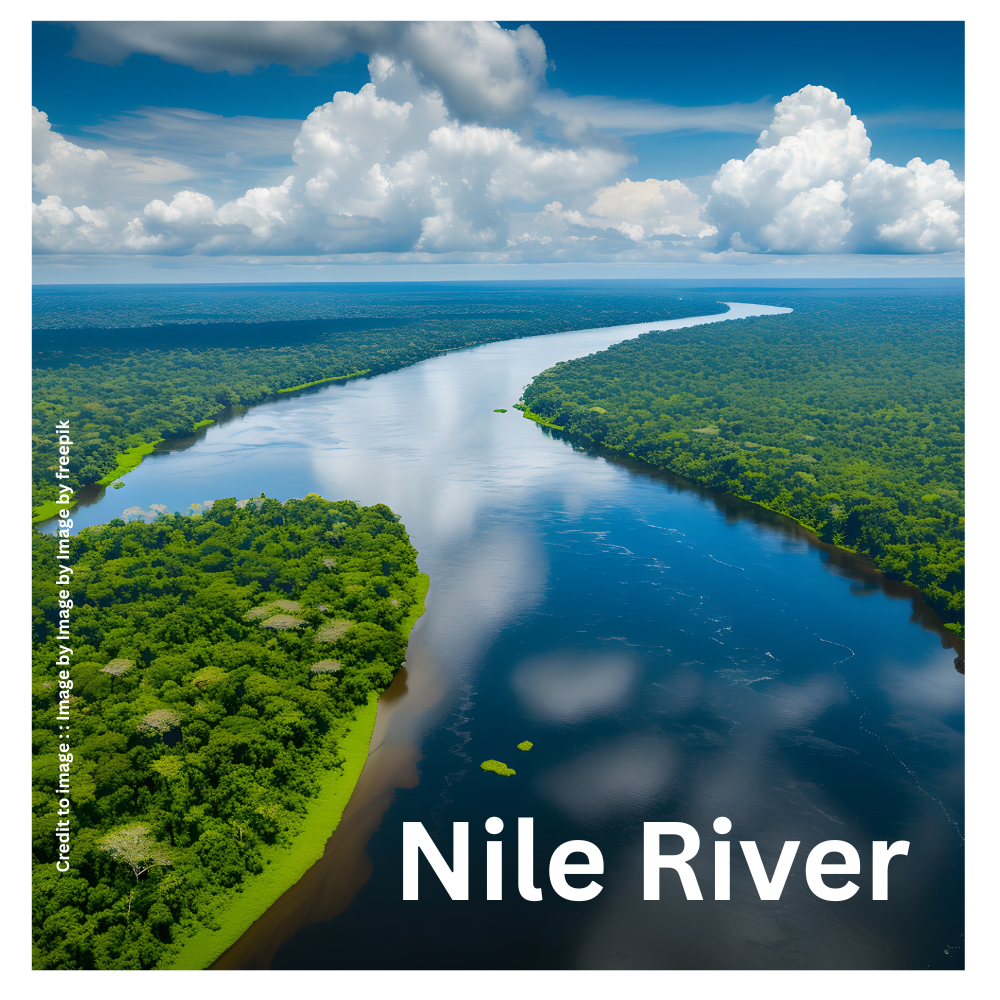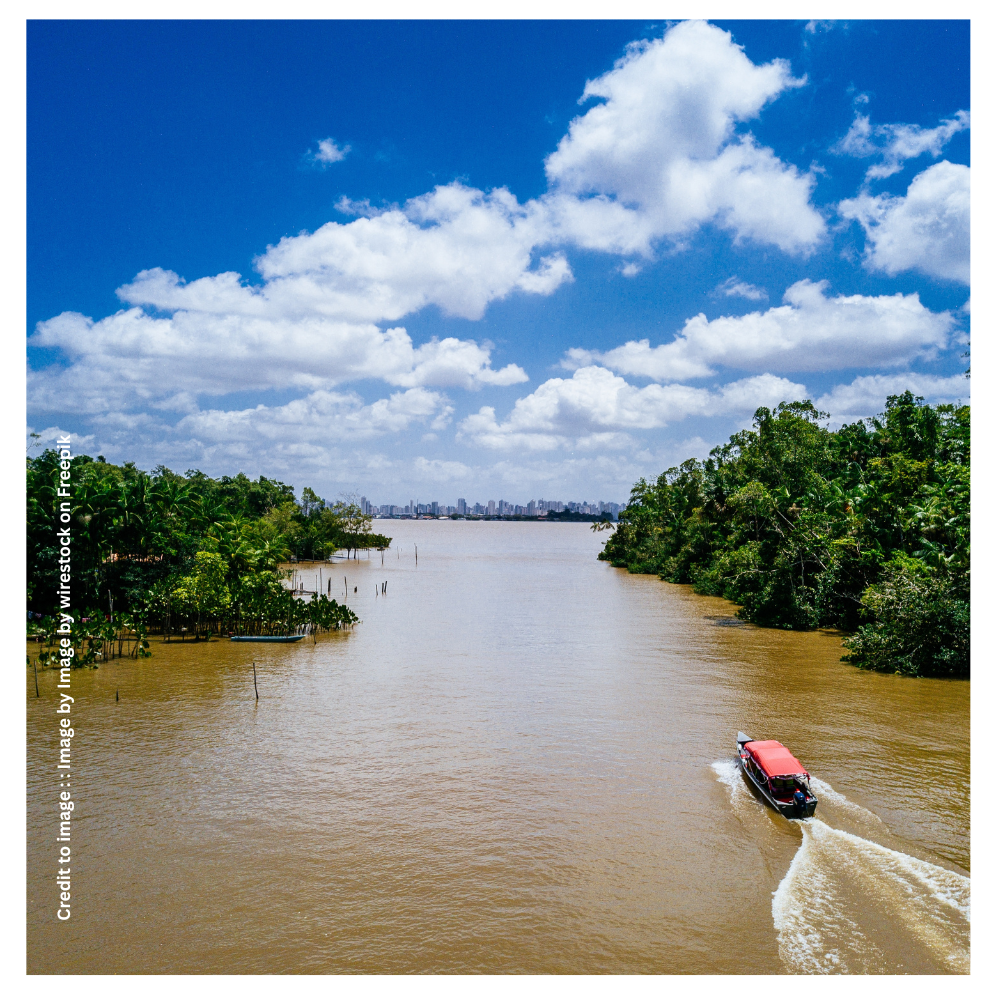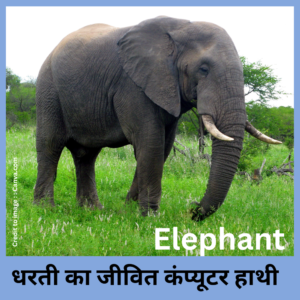The Nile River, stretching over 6,650 kilometers, is the longest river in the world and a lifeline for northeastern Africa. Flowing through eleven countries, it supports agriculture, biodiversity, climate regulation, and has deep roots in ancient Egyptian mythology. Article “Nile River History Facts “ explores the geographical, scientific, ecological, and cultural significance of the Nile River with updated data i.e. Data Table 1: General Facts of the Nile River, 🧪 Data Table 2: Scientific and Hydrological Data of the Nile River, Data Table 3: Nile River Biodiversity, 📊 Data Table 4: Nile River and Ancient Egyptian Beliefs, Frequently Asked Questions (FAQs),Conclusion and References etc.
🏞️ Introduction: The Lifeline of Africa — Nile River History Facts
The Nile River is not just a river; it’s a symbol of civilization, sustenance, and spiritual belief. From ancient Egyptian pyramids to modern agriculture, the Nile has influenced the growth of human society across millennia. Flowing primarily through Uganda, Sudan, and Egypt, this majestic river has a basin that impacts more than 300 million people.
🗺️ Geography of the Nile River
Two major tributaries of Nile river are as follows :
White Nile – originating in East Africa (Lake Victoria, Uganda)
Blue Nile – rising from Lake Tana in Ethiopia
They converge near Khartoum, Sudan & flow northwards into Egypt.Finally drain into the Mediterranean Sea.
📊 Data Table 1: General Facts of the Nile River
| Feature | Details |
| Length | ~6,650 km (4,130 miles) |
| Source | White Nile (Lake Victoria), Uganda |
| Mouth | Mediterranean Sea |
| Major Tributaries | Blue Nile, White Nile |
| Countries Covered | 11 (including Egypt, Sudan, Uganda, etc.) |
| Major Cities Along Nile | Cairo, Khartoum, Juba |
🧪 Data Table 2: Scientific and Hydrological Data of the Nile River
| Parameter | Value/Details |
| Average Discharge | 2,830 m³/s at Aswan |
| Basin Area | ~3.4 million km² |
| Annual Rainfall in Basin | 600 – 1,500 mm |
| Elevation at Source | ~1,135 m (White Nile) |
| Sediment Load (Annual Average) | ~134 million tons |
🌱 Climate Role and Biodiversity of the Nile River
🌍 Climate Regulation
The Nile plays a significant role in regulating local and regional climates. The water body helps moderate temperature extremes, supports monsoon systems in East Africa, and sustains soil moisture for agriculture.
🐊 Nile River Biodiversity Importance: A Natural Treasure Trove
The Nile River biodiversity importance cannot be overstated. As Africa’s lifeline, the Nile supports a wide array of ecosystems, making it vital for wildlife conservation and environmental stability.
🐟 Rich Aquatic Life
The Nile is home to over 129 fish species, including the famous Nile Perch, Tilapia, and African catfish. These species are crucial to local fishing economies and food security for riverside communities.
🐘 Supporting Terrestrial and Wetland Habitats
Beyond aquatic species, the Nile supports:
- Hippopotamuses and Nile crocodiles
- Wetlands with papyrus reeds and migratory bird sanctuaries
- Mammals i.e. monitor lizards & African manatee
The Sudd Wetland in South Sudan and the Nile Delta in Egypt are ecological hotspots that provide nesting, breeding, and feeding grounds for birds, amphibians, and reptiles.
🌎 Environmental and Climate Role
The Nile helps regulate local climates by:
- Maintaining soil moisture in dry areas
- Recharging groundwater
- Supporting carbon sequestration in wetlands
📊 Data Table 3: Nile River Biodiversity
| Category | Notable Species |
| Fish | Nile Perch, Tilapia, African catfish |
| Mammals | Hippopotamus, African manatee |
| Reptiles | Nile crocodile, Nile monitor |
| Birds | African fish eagle, Great white pelican |
| Endemic Species | Over 20 aquatic species endemic to Nile Basin |
Nile River Religious Mythology: Sacred Waters of the Gods
In Ancient Egyptian mythology, the Nile River was worshipped as a divine gift from the gods. Key beliefs include:
In Nile River religious mythology, the river wasn’t just a water body—it was a divine force central to Ancient Egyptian spirituality and daily life.
🛕 The God Hapi
The god Hapi symbolized the yearly flooding of the Nile River, a sacred event that enriched the soil and brought abundance and fertility to the land. Egyptians worshipped Hapi through offerings and rituals to ensure successful harvests. Hapi was often depicted with blue skin and a bulging belly, symbolizing abundance.
👑 Life and Afterlife
The Nile played a dual role as follows :
East Bank (Sunrise): Land of the living – homes, temples, and towns
West Bank (Sunset): Land of the dead – tombs, pyramids, and mortuary temples
Pharaohs believed the Nile guided the soul to the afterlife, aligning their burial sites to follow this sacred journey.
💧 Isis and Osiris Myth
According to myth, the goddess Isis wept for her slain husband Osiris, and her tears caused the annual flooding of the Nile. This flood was celebrated as it rejuvenated the land, aligning the physical world with divine cycles.
📊 Data Table 4: Nile River and Ancient Egyptian Beliefs
| Mythological Aspect | Description |
| Hapi (God)-Egyptian Belief | As per Egyptian :God of annual flooding and fertility |
| Isis and Osiris (Mythological Words) | River flood linked to goddess Isis’ mourning |
| Nile’s East Bank | Land of the living (temples, homes) |
| Nile’s West Bank | Land of the dead (tombs, pyramids) |
🌾 Nile River’s Role in Economy and Sustainable Agriculture
The Nile enables irrigation farming across vast desert regions of Egypt and Sudan. It supports:
Rice, wheat, and sugarcane cultivation
Drinking water for millions
Fishing and transportation
Hydroelectric power (e.g., Aswan High Dam)
The Nile Basin Initiative (NBI) also promotes cooperative water management for long-term sustainability among riparian nations.
Comparative table of the world’s major rivers —
Nile River, Amazon River, Mississippi River, Yangtze River, Ganga River, and Brahmaputra River — showcasing key geographical, hydrological, and ecological attributes.
🌊 Comparative or Data Table of Major World Rivers
| Components / River | Nile River | Amazon River | Mississippi River | Yangtze River | Ganga River | Brahmaputra River |
| Length (Approx.) | 6,650 km (4,130 mi) | 6,400 km (3,980 mi) | 6,275 km (3,902 mi) | 6,300 km (3,917 mi) | 2,525 km (1,569 mi) | 2,900 km (1,800 mi) |
| Continent | Africa | South America | North America | Asia | Asia | Asia |
| Countries Covered | 11 (e.g., Egypt, Sudan, Uganda) | 7 (e.g., Brazil, Peru, Colombia) | USA (Mainly) | China | India, Bangladesh | China, India, Bangladesh |
| Source of river | Lake Victoria, Uganda | Andes Mountains, Peru | Lake Itasca, Minnesota, USA | Tibetan Plateau | Gangotri Glacier, India | Angsi Glacier, Tibet |
| Mouth of river | Towards Mediterranean Sea | Atlantic Ocean | Towards Gulf of Mexico | East China Sea | Towards Bay of Bengal | Bay of Bengal |
| Average Discharge | ~2,830 m³/s | ~209,000 m³/s | ~16,200 m³/s | ~30,000 m³/s | ~12,000 m³/s | ~19,800 m³/s |
| Basin Area | ~3.4 million km² | ~7.0 million km² | ~3.2 million km² | ~1.8 million km² | ~1.1 million km² | ~0.6 million km² |
| Biodiversity | Moderate (fish, birds, reptiles) | Highest globally (2,000+ species) | Rich in North American fauna | High (Chinese alligator, fish) | High (Ganges dolphin, fish) | Very high (Himalayan species) |
| Major Cities Along River | Cairo, Khartoum | Manaus, Iquitos, Belém | Minneapolis, St. Louis, New Orleans | Shanghai, Wuhan, Chongqing | Varanasi, Kolkata | Guwahati, Dhaka |
| Religious Significance | High (Ancient Egypt mythology) | Low (mainly ecological) | Low (mostly secular use) | Moderate (Taoist/Buddhist sites) | Very High (Hinduism – sacred river) | High (Buddhist and Hindu regions) |
| Notable Dams | Aswan High Dam | None (mostly free-flowing) | Numerous (e.g., Missouri Dams) | Three Gorges Dam | Farakka Barrage | Teesta & Subansiri Projects |
✅ Notes:
- Amazon River is the largest by volume and hosts the world’s richest biodiversity.
- Nile River is generally accepted as the longest river.
- Yangtze River is the longest river in Asia and has major hydroelectric projects.
- Ganga River is India’s most sacred river, central to Hindu rituals.
- Brahmaputra River flows through the Himalayas, carrying a massive sediment load and having flood-prone regions.
❓ Frequently Asked Questions (FAQs)-A
Q1: Nile River is the longest river in the world or not ?
Yes, it is widely recognized as the world’s longest river at approximately 6,650 kilometers.
Q2: Write down the name of two main tributaries of Nile River?
Two tributaries of Nile River are White Nile (Uganda) & the Blue Nile (Ethiopia) .
Q3: How many countries connected with Nile River ?
Nile river connected with 11 countries i.e. Uganda country , Ethiopia, Kenya (Small country ) , Egypt, Sudan country , the Democratic Republic of Congo, and Eritrea , South Sudan, Tanzania, Rwanda, Burundi (Small country ) .
Q4: Why Nile River is important for Egypt?
It provides over 95% of Egypt’s freshwater. Fulfils/provides water for agriculture, drinking water, transportation, and power etc .
Q5: What animals live in the Nile River?
The Nile hosts Nile crocodiles, hippos, African fish eagles, perch, tilapia, and many endemic species.
Q6: How does the Nile affect climate in the region?
It moderates temperatures, supports rainfall cycles, and sustains vegetation in arid zones.
Q7: What is the role of the Nile in Egyptian mythology?
It was considered sacred, associated with gods like Hapi, and central to rituals involving Isis and Osiris.
Q8: What is the historical importance of the Nile?
The Nile enabled the development of Ancient Egyptian civilization by supporting agriculture and trade routes.
❓ Frequently Asked Questions (FAQs)-B
Q9: Are there dams on the Nile River?
Yes, major dams include the Aswan High Dam (Egypt) and the Grand Ethiopian Renaissance Dam (Ethiopia).
Q10: Is the Nile River facing environmental challenges?
Yes, including water pollution, overuse, dam disputes, and biodiversity loss.
Q11: What is the Nile Basin Initiative (NBI)?
It is a regional partnership aiming to develop the Nile sustainably among its riparian countries.
Q12: What is the significance of Nile’s annual flood?
It used to replenish farmlands with nutrient-rich silt, essential for ancient farming.
Q13: Can the Nile be navigated by boats?
Yes, especially in Egypt and Sudan, where cruise tourism and trade depend on it.
Q14: How old is the Nile River?
Geological studies estimate it to be over 30 million years old, making it one of the oldest rivers.
Q15: What crops are grown with Nile irrigation?
Wheat, cotton, rice, maize, sugarcane, vegetables, and fruits.
✅ Conclusion
The Nile River is much more than a geographical feature — it’s the cradle of African civilization, a biodiversity hub, a spiritual entity, and an economic powerhouse. From the ancient temples of Thebes to modern hydroelectric power stations, its waters have shaped the fate of nations. Its mythology, biodiversity, and environmental relevance make the Nile one of the most significant rivers on Earth. As climate change and overuse threaten its legacy, cooperative conservation and sustainable management are essential for its future.
📚 References
- Encyclopedia Britannica – Nile River Facts
https://www.britannica.com/place/Nile-River - NASA Earth Observatory – Nile River Basin and Climate
- Food and Agriculture Organization (FAO) – Nile Basin Water Resources
- UNESCO – Nile River Biodiversity Reports
- Ancient Egypt Online – Religious Significance of the Nile
- Nile Basin Initiative (NBI) – https://nilebasin.org
- World Bank Reports – Nile River and Regional Development
- World Wildlife Fund (WWF) – Aquatic Ecosystems of the Nile
PRAKRITI DARSHAN-NATURE AND ENVIRONMENT MAGAZINE
Prakriti Darshan is a leading Hindi-language magazine and digital platform dedicated to raising public awareness on vital issues related to nature, biodiversity, climate change, sustainable development, and environmental conservation. This magazine represents a unique blend of science, society, and sensitivity—offering a common platform for researchers, students, NGOs, policymakers, nature lovers, and conscious citizens alike.
With thought-provoking articles, inspiring stories, environmental research, impactful projects, and policy perspectives, Prakriti Darshan is a transformative journey toward a greener and more sustainable future.
Let us come together to protect and preserve our planet for generations to come. 🌿🌍
Join us in our mission to protect and celebrate the planet. 🌏💚
Click for more information
- Visit www.prakritidarshan.com for Free Magazine ,Free membership benefits ,offered price magazine @ Rs.1 or Rs.11 only and more ……
- 🎗️Sponsor Prakriti Darshan Magazine – Support our environment mission.
- 📚 Explore the Environment Magazine – Read our latest and past issues.
- ✍️ Read Editor’s Article or Blog – Insightful thoughts from our editorial desk.
- 🌱 Join Membership – Be part of India’s leading green community.
- 🤝 Become an NGO Impact Story Partner – Share your grassroots impact nationwide.
- 🏢 Become a Company Partner – Showcase your CSR, ESG, or sustainability work.
- 👤 Become an Individual Partner – Volunteer, write, and raise your green voice.
- 📢 Advertise with Us – Reach eco-conscious readers across India.
- Eco Trails Newsletter
- Donate for “Hari Ho Vashundhara & Har school Hariyali “ Plantation campaign Associated Partner NGO :GDSS NGO www.gdssngo.org
BALA DATT SHARMA,
MANAGING EDITOR ,
PRAKRITI DARSHAN-NATURE AND ENVIRONMENT MAGAZINE
- Yamuna River- Lifeline of North India :A Scientific, Agricultural, and Environmental Perspective - July 14, 2025
- Jurassic World Rebirth Breaks Box Office Records : Global Box Office Revenue $1.5 Billion (And rising) Globally with a Roaring Environmental Message - July 14, 2025
- African Elephant: Facts, Types, Scientific Data, and Why Their Survival Matters for Our Planet - July 13, 2025










